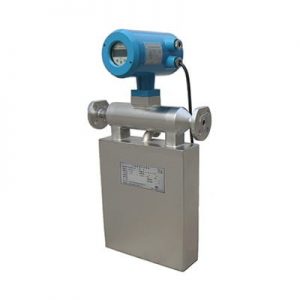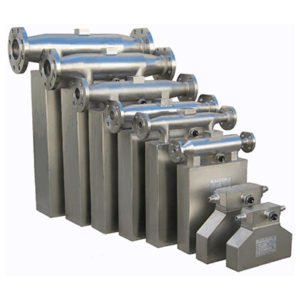The principle of density measurement by mass flowmeter.
Can mass flow meters measure density? The answer is yes. The principle is explained below:
One end of the flow tube is fixed, while the other end is free.
This structure can be regarded as a weight/spring system composed of a weight suspended on a spring. Once a movement is applied, the weight/spring system will vibrate at its resonant frequency, which is similar to that of the weight of quality is related.
The flow tube of a mass flow meter vibrates at its resonance frequency through a drive coil and a feedback circuit. The resonance frequency of the vibration tube is related to the structure, material, and quality of the vibration tube.
The quality of the vibrating tube consists of two parts: the mass of the vibrating tube itself and the quality of the medium in the vibrating tube. After each sensor is produced, the quality of the vibrating tube itself is determined.
The mass of the medium in the vibrating tube is the product of the medium density and the volume of the vibrating tube, and the volume of the vibrating tube is fixed for each type of sensor, so the vibration frequency is directly related to the density.
Then, for determining the structure and Material sensor, the density of the medium can be obtained by measuring the resonance frequency of the flow tube.
A pair of signal detectors used for flow measurement can obtain a signal representing the resonant frequency.
The signal of a temperature sensor is used to compensate for changes in the stiffness of the flow tube caused by temperature changes.
The vibration period is measured by measuring the vibration period and The temperature is obtained, and the density of the medium is measured using the linear relationship between the density and the vibration period of the flow tube and the standard calibration constant.
When the mass flow sensor vibrates the tube to measure the density, the rigidity of the pipeline, the geometric structure, and the quality of the flowing fluid together determine the natural frequency of the pipeline device, so the fluid density can be derived from the measured pipeline frequency.
The transmitter uses a high-frequency clock to measure the time of the vibration cycle.
The measured value is digitally filtered to compensate for the change in the rigidity of the pipeline caused by the operating temperature, and then the change in the natural frequency, and then use the sensor density calibration coefficient to calculate the process fluid density.


